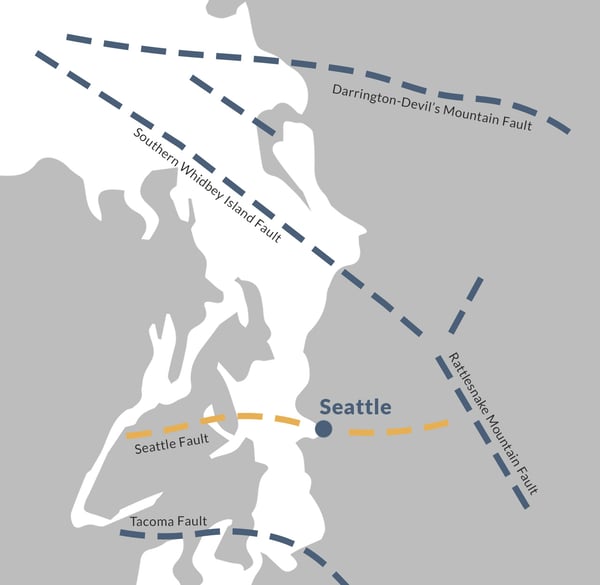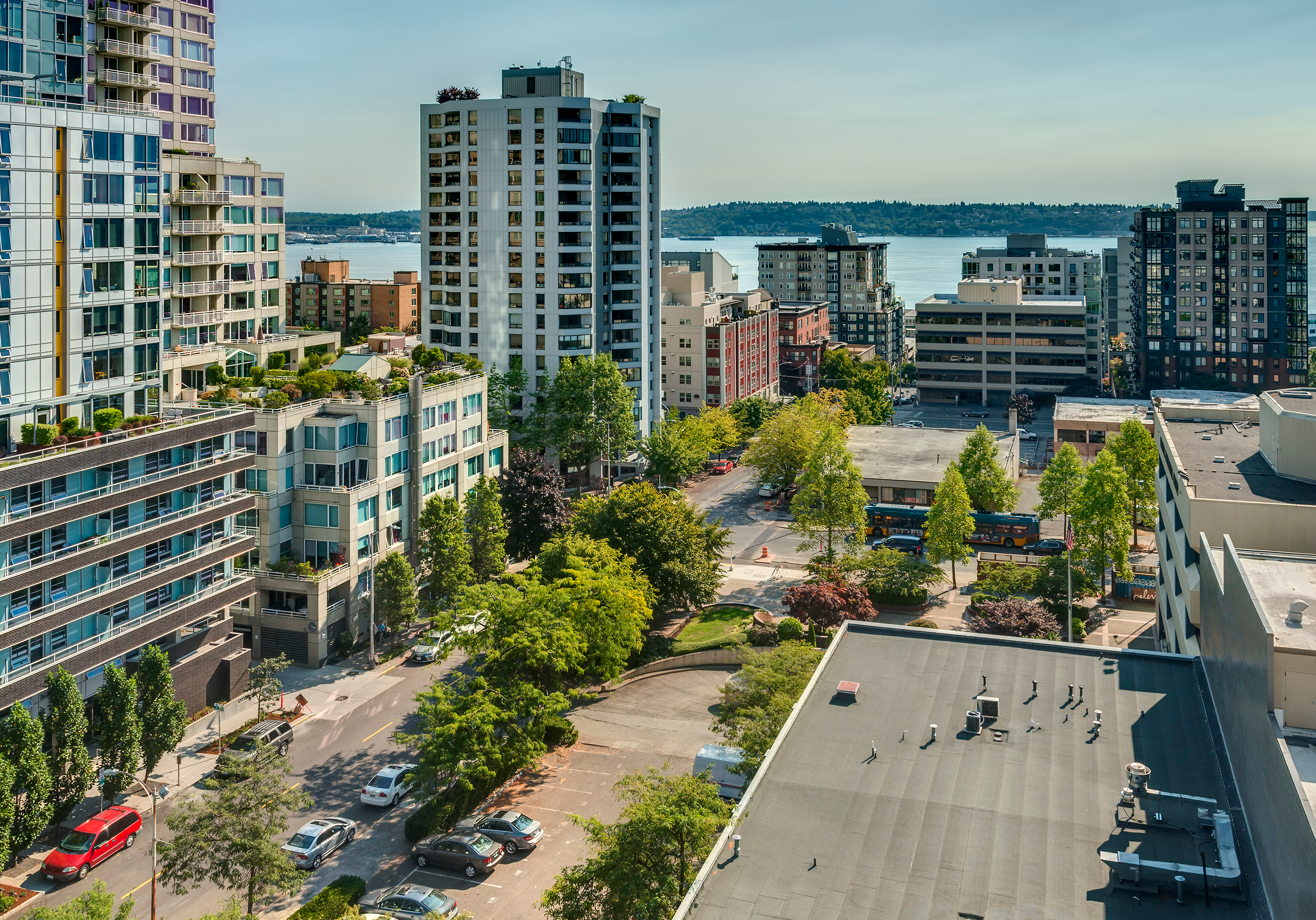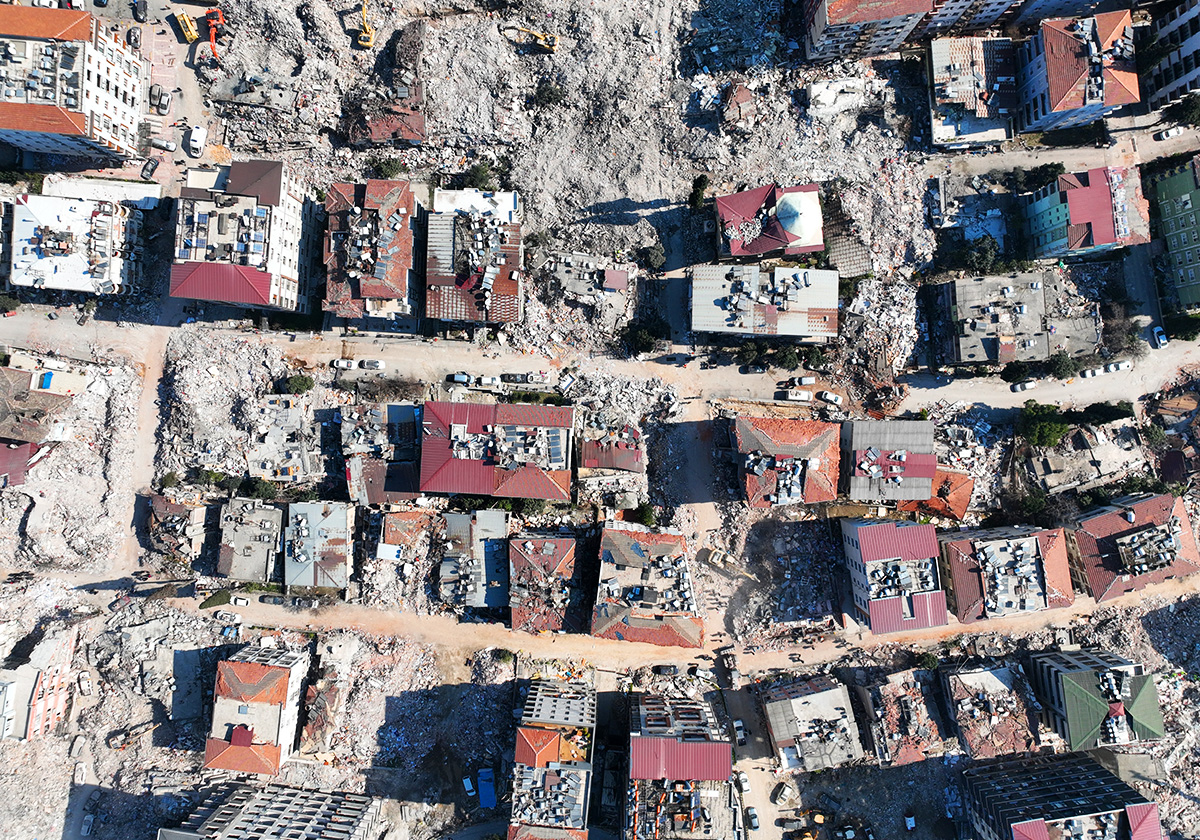In the aftermath of the devastating earthquake that recently shook Taiwan, questions arise about the seismic preparedness of cities around the Pacific Rim, known for their vulnerability to the Earth’s violent whims.
Seattle faces its own reckoning with the inevitable. While countries like Taiwan and Japan have fortified their urban landscapes with stringent building codes and innovative engineering, Seattle lags in a complacent haze, its foundational preparedness mired in bureaucracy and delayed decision.
Now is the time for action.
Delayed awakening
Seattle, cradled by the Puget Sound and dominated by the imposing Mount Rainier, sits on the precarious edge of the Ring of Fire.
This region is not just a testament to the Earth's magnificent geological dynamism – the Olympic mountains and Cascades are among the most beautiful in the world -- but also a constant reminder of the raw, unforgiving power that lurks beneath: several major fault lines run through the region, including the Seattle Fault Zone right through the heart of the city.1

Yet, despite the clear and present danger, the city's preparedness is a patchwork of efforts—earnest yet insufficient, ambitious yet uncoordinated.
In Japan, the memory of the 1995 Kobe earthquake led to a national overhaul in building resilience and public safety. Taiwan, too, learned from its 1999 tragedy, adopting among the world's most rigorous earthquake engineering standards. Meanwhile, Seattle's old brick buildings—a picturesque but perilous legacy—stand as un-retrofitted monuments to a time of lesser knowledge and, perhaps, lesser concern.
Washington's stride towards seismic safety has seen progress, most notably in the form of the 2024-2026 Integrated Preparedness Plan. However, this effort, while commendable, reveals a disquieting truth: both the city and state are playing a catch-up game in a race where time is a luxury we do not have. These steps, though necessary, are but initial forays into a domain that requires not just steps but leaps.
And the recent earthquake in Taiwan serves as a stark reminder of the devastation that seismic activities can wreak, emphasizing the critical need for robust preparedness and response strategies.
Time bombs in brick and mortar
One of the most glaring examples of Seattle's seismic vulnerability is its unreinforced - or under-reinforced - masonry buildings. Many of these structures are ill-prepared to withstand seismic forces.2
While efforts to retrofit have begun, the pace and scope of these initiatives are outmatched by the scale of the threat. To get an idea of the scope of the undertaking we are confronted with, examine this map - you can zoom in and out and click on the data points to see the street addresses:
Each dot on the map above represents a building in need of retrofitting, classified as either High Risk or Critical Risk.
Currently there are 1144 buildings in need of retrofitting: 883 classified as Medium Risk, 186 classified as High Risk, and 75 classified as Critical Risk. This number has changed little in recent years - check out the most recent tally as of March 2024.
Of course, the economic considerations for a wide-scale retrofitting campaign are immense; retrofitting a building is often prohibitively expensive. For example, in the years following the 2001 Nisqually Earthquake, Seattle passed a ballot measure to retrofit 32 fire stations throughout the city. The final price tag? Over $197 million.
Related:
Unreinforced Masonry Buildings: A Hidden Danger
But the estimated $1.3 billion required to retrofit all of Seattle's older buildings is a drop in the bucket compared to the potential fallout.3 For one of the wealthiest cities in the United States, this should be a cake walk.
Mind you, retrofitting these structures is not merely about preserving architectural heritage - it's about safeguarding human lives. The cost of inaction, measured in potential human tragedy, far outweighs the financial outlays required for these essential upgrades. These are people's homes, their places of work, and, oftentimes, where they go to school - out of 9,000 educational structures throughout Washington, only 232 were constructed after the earthquake building codes were revised in 2004.4
The current pace of retrofitting, sluggish and sporadic, starkly contrasts with the swift, relentless approach of seismic inevitability. This must change.
Bright spots
Seattle's earthquake preparedness leaves much to be desired. But that doesn't mean the city, and state more generally, will be totally unprepared.
The State Enhanced Hazard Mitigation Plan (EHMP) outlines comprehensive strategies to mitigate risks, including earthquake preparedness. It emphasizes the importance of community involvement and state-wide coordination in strengthening resilience through a variety of means:
Early warning systems
The implementation of an early warning system - the ShakeAlert® system - provides real-time alerts seconds before an earthquake’s shaking is felt, allowing people and systems to take precautionary actions. A vast array of ground motion detectors spread throughout the West Coast continuously records ground movement and transmits the data to main processing facilities.
Emergency response and recovery plans
The EHMP underscores the importance of robust emergency response and recovery plans. These plans detail coordinated actions among various government agencies, emergency services, and community organizations in the immediate aftermath of an earthquake and focus on rapid response to save lives and property, and to efficiently distribute resources. Additionally, these plans emphasize the long-term recovery process, aiming to rebuild communities to be more resilient to future seismic events.
Related:
A Closer Look at Earthquake Risk in Washington State
Community preparedness and public education
Understanding that preparedness starts on the individual level, the EHMP emphasizes community preparedness programs and public education campaigns. These initiatives equip residents with the knowledge and tools they need to prepare for and respond to earthquakes.
Workshops, drills, and informational resources help build a culture of preparedness, emphasizing actions individuals can take to reduce their vulnerability, such as securing heavy furniture, creating emergency plans, and maintaining emergency supply kits.
The Great Washington Shakeout arms residents and K-12 students with necessary knowledge about earthquake risk and preparation/safety.
-- -- --
Furthermore, in the wake of 2001 Nisqually quake, the city of Seattle has conducted extensive overhauls of important pieces of infrastructure, including:
- Seismic Retrofit and Replacement of Fire Stations
- New key facilities built to modern code, including the new City Hall and Seattle Justice Center
- Alaskan Way Viaduct replacement
- Elliot Bay seawall project
- Seismic upgrades to key bridges
- Community center upgrades and generator installation
- Emergency gas shut-off valve installation
Building a resilient city
Disaster preparedness is necessary after an earthquake strikes; proactive mitigation strategies head the potential ramifications off at the pass.
For Seattle to navigate its way out of its current precariousness, retrofitting efforts for vulnerable structures must be accelerated and expanded, backed by robust funding and clear, enforceable deadlines. Seattle and the state of Washington have already made massive strides; our updated building codes mean that newer construction follows among the best standards in the world. We must keep pushing.
Seattle stands at a crossroads. The path it chooses now—to boldly confront and prepare for its seismic reality or to continue along a trajectory of piecemeal efforts and missed opportunities—will define its future.
It took Taiwan 25 years to implement their current earthquake policies.5 For Seattle, the time to start taking the threat seriously is today.
Though the earth may shake, our resolve must not.
[1] DNR, https://www.dnr.wa.gov/programs-and-services/geology/geologic-hazards/earthquakes-and-faults
[2] Seattle, https://www.seattle.gov/emergency-management/hazards/unreinforced-masonry-buildings-(urm)
[5] NBC News, https://www.nbcnews.com/science/science-news/taiwan-earthquake-well-prepared-rcna146243









